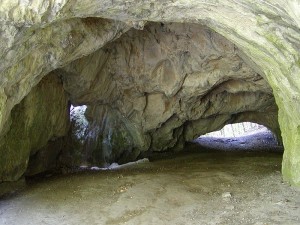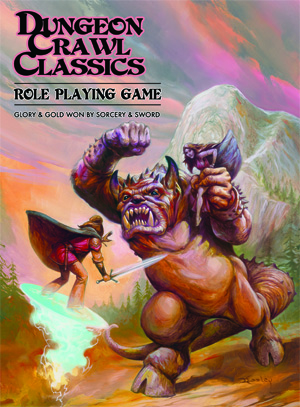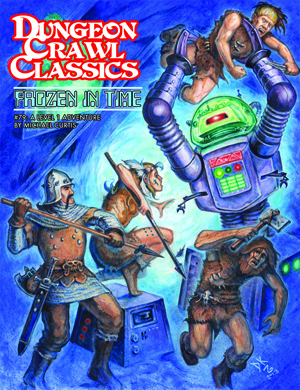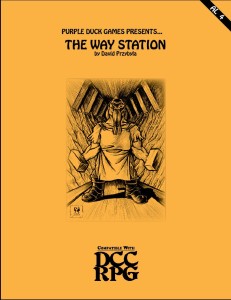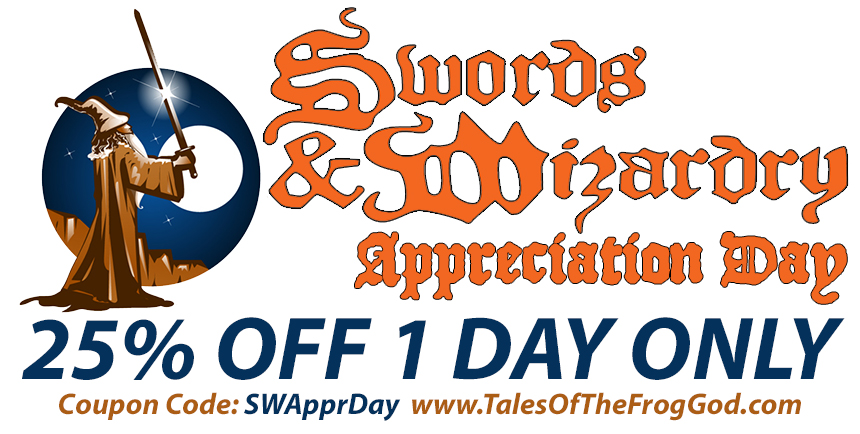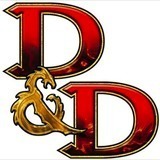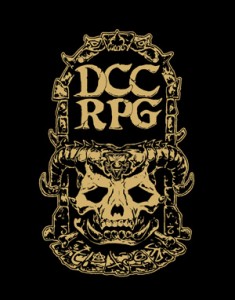Wednesday is typically a day I post a map of some sort to The Iron Tavern. In honor of Swords & Wizardry Appreciation Day I decided to make a map just for this event and apply some S&W loving to it. The result is this mini-adventure that can be used standalone or added onto by an enterprising GM.
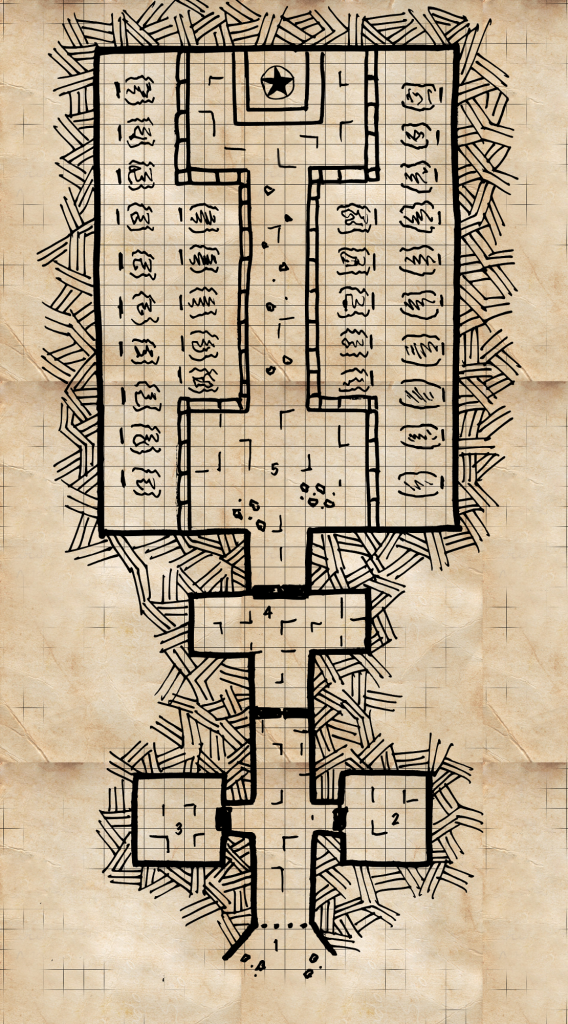
Catacombs of Corruption
The village of Falstaff is nestled in a rocky valley at the foothills of a great mountain range. Falstaff is a small village situated right on one of the busier travel routes into the heart of the mountains and the mines. Business booms in the small town as the merchants and business owners cater to the miners traveling to and from the mines.
Just outside of town the village maintains a city catacomb. With the surrounding rock and soil so rocky, a traditional cemetery is near impossible. Instead, the town has reclaimed some old worked tunnels, abandoned when the first residents moved into Falstaff. The catacombs contain several small chambers for burial preparations and one large chamber providing ample space to put those villagers who have died to rest. The catacomb has served the town of Falstaff well for the past ten years.
Last week however, a pair of grave diggers made their way by the locked gates to prepare a site for a recently deceased citizen of Falstaff. Only one made it back alive and his tale seems too tall to believe. He says the two were digging a fresh grave in the heart of the catacomb when the dead began to arise around them.
Dropping their shovels the pair tried to escape, but Almgram’s partner was grabbed by a hand pushing up from a grave. Almgram tried to pull his friend free, but as the dirt erupted near him he turned and fled. He reached the gated entrance of the catacomb and slammed it shut behind him. The gate locked, the only existing key resting with his partner deep inside the catacomb.
The mayor of the village, Jhanet Sylvanik, has posted a sign on the central message post in the center of Falstaff offering a 800gp reward to any group that can clear the catacombs of these undead creatures. Here a week later after the event, she is growing desperate for help in putting this problem to rest.
The Approach
The entrance to the catacombs is easily found and is just a short distance down the road from the small town of Falstaff. A small, heavily rutted cart path turns off the main trail and leads one to the gates of the catacomb.
All passages beyond the gate are unlit. Light sources will be necessary unless a character has Darkvision or some other means of seeing in the dark.
1: Catacomb Entrance
The catacomb entrance lies at the end of the cart path, broad iron gates closing the entrance. A lone shadowy figure can be seen just on the other side of the gate, arms appearing to swim through the air as it claws at something unseen on the other side. Soft, guttural moans reach your ears as your watch from the other side of the gate.
The catacomb entrance is gated. The gate is locked with the only known key being on Amalgram’s partner in business deep within the catacomb. A lone zombie seeks to escape through the gate as it repeatedly swipes through the open bars and pushed against the bars in a futile attempt to break through.
The zombie behind the gate will try to attack any who draw too near the bars.
Monsters: Zombie: HD 2; AC 8[11] ; Atk 1 strike (1d8); Move 6; Save 16; AL N; CL/XP 2/30;Special: Immune to sleep and charm
Treasure: None
Once the zombie has been dealt with the party will need to figure out a way past the gate. The lock could be picked or the gate could be smashed down as if it were a stuck door.
Rusty Lock: The lock on the gate is rusty. Allow an increased 10% chance of opening it.
2: Preparation Chamber 1
The door to this chamber has been battered down. The smell of rot and decay waft out through the remains of the door. Inside a human figure with patches of missing gray flesh revealing yellowing bones shambles about amongst overturned shelves with broken glassware on the chamber floor.
This room was formerly an area used to clean and prepare bodies before being buried in the burial chamber ahead. The roaming zombie has destroyed the room’s contents in its mindless movement.
Monsters: Zombie: HD 2; AC 8[11] ; Atk 1 strike (1d8); Move 6; Save 16; AL N; CL/XP 2/30;Special: Immune to sleep and charm
Treasure: None
3: Preparation Chamber 2
A mid-sized table standing three and half feet tall sits in the center of the room. A two basin cabinet sits along the other wall. A small cupboard hangs from the south wall. Two lantern brackets hang directly over the table in the center of the room.
This is another preparation chamber for the dead. No zombies have found their way to this room and it is mostly intact.
Monsters: None
Treasure: None
4: Antechamber
The doors to this T-shaped room are torn from their hinges, hanging haphazardly. The movement of two shapes can be seen lurching through the damaged doors.
The T-shaped room is a decorated foyer just prior to entering the main burial chamber. Tall candelabras have been knocked to the floor by the lurching zombies on either side of the chamber.
Monsters: 2 Zombies: HD 2; AC 8[11] ; Atk 1 strike (1d8); Move 6; Save 16; AL N; CL/XP 2/30;Special: Immune to sleep and charm
Treasure: 2 candelabras (75gp each) – Falstaff’s residents might object to the looting of these.
5: Burial Chamber
The dank smell of decay and dirt fill this expansive chamber. Four feet tall walls of flagstone form a pathway through the center of the room. Mounds of dirt mark dozens of graves on the shelf-like areas to the left and right sides of the chamber.
A faint glowing blue light can be seen along the far wall of the room, about nine feet off the ground. It stands unmoving. The floor of the chamber is littered with dirt and broken flagstones from where the makeshift walls have been disturbed.
In the faint light the shambling humanoid figures can be seen in both the pathway and on the higher dirt mounds. The guttural sounds of the creatures grows louder as they begin to lurch towards you.
There are five zombies moving about this room. More zombies will surface for each hour the source of their rising is not dealt with (the statue at the end of the room, see below).
Monsters: 5 Zombies: HD 2; AC 8[11] ; Atk 1 strike (1d8); Move 6; Save 16; AL N; CL/XP 2/30;Special: Immune to sleep and charm
Treasure: None
Once the zombie threat has been eliminated the party can investigate the statue more closely.
The statue at the far end of the room stands on a stepped dais. The statue is carved of stone and covered with small metal studs and depicts a slender, robed woman with an outstretched hand. The source of the blue light visible upon entering the chamber is a dark blue gemstone set in her left eye. The light appears to flicker inside. The soft glow from the gemstone illuminates the entire statue.
The statue has been present in the catacomb since the time the villager of Falstaff began using these ancient structures as a burial site. The blue stone has never been known to glow before.
The glowing blue stone is the source of what is causing the dead to rise from their graves as zombies. The stone has also caused an electric current to run along the outer portions of the statue. Anyone touching the statue is shocked for 1d4 damage. Anyone touched the gemstone is shocked for 1d8 damage.
To disable the trap the dark blue gemstone must be removed from the left eye of the statue. There are several ways to do this, but any that involve using something that conducts electricity will result 1d8 damage from touching the stone. Using a wooden pole or any other creative solution will allow a character to remove the stone without harm.
Once the dark blue gemstone is removed it continues to flicker dully, but loses its electrical-like properties. The stone must be destroyed to prevent more dead from rising. Smashing it with a rock, weapon or other means will work.
There is a secret door beneath the statue. If the secret door is detected, the character finds a small lever at the base of the statue in the back. Sliding the lever to one side allows the statue to slide to the left revealing a trap door. The trap door appears to have been used recently. No one in the village is aware of this trap door.
Opening the trap door reveals a natural stone passage that descends about ten feet before opening into a larger passage below.
To Be Continued…
The threat to the village of Falstaff from the rising undead has been eliminated and the adventure can easily be ended here. But what activated the blue stone that had sat inert in the statue for decades? What lurks in the tunnels beneath the statue?
 Author: Daniel J. Bishop
Author: Daniel J. Bishop
